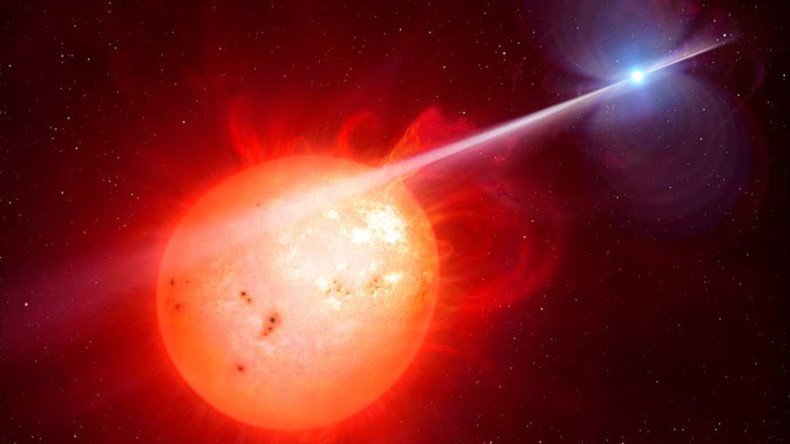Mystery space ray: White dwarf blasting neighbor star with ‘brutal’ radiation (VIDEO, POLL)

A group of amateur astronomers have discovered a mysterious bond in outer space, where a white dwarf star appears to be showering its companion red dwarf entity with ultraviolet and radio waves.
The existence of a unique radiation feed between two stars of the AR Scorpii system - located around 380 light years from Earth - was first picked up by stargazers from Germany, Belgium and the UK in 2015.
Now a new study published in Nature, entitled ‘A radio-pulsing white dwarf binary star’, provides a greater insight into the phenomenon after it was put under the large telescopes of the European Southern Observatory (ESO).
The study was led by experts at the University of Warwick in England and provides evidence that a rapidly spinning white dwarf, around the same size as Earth, is showering radiation onto another star in near orbit.
The pulse of radiation, comparable to a lighthouse beam, is so intense that it causes the red dwarf to brighten and fade over a period of nearly two minutes.
A sped-up artist’s impression of the AR Scorpii relationship resembles something from the latest Star Wars series, with jets of radiation raining down on the red dwarf.
The ESO itself describes the instance as a “brutal” interaction, where the white dwarf accelerates electrons up to near the speed of light, releasing “high energy particles” which whip through space.
Although the dwarf accelerates the movement of electrons, the origin of the electrons themselves remains a “major mystery.”
“AR Scorpii was discovered over 40 years ago, but its true nature was not suspected until we started observing it in 2015. We realized we were seeing something extraordinary within minutes of starting the observations,” said lead researcher Tom Marsh, from the University of Warwick’s astrophysics group.
Co-author of the study Boris Gansicke said the discovery was a major feat for amateur astronomers and academics working in unison.












